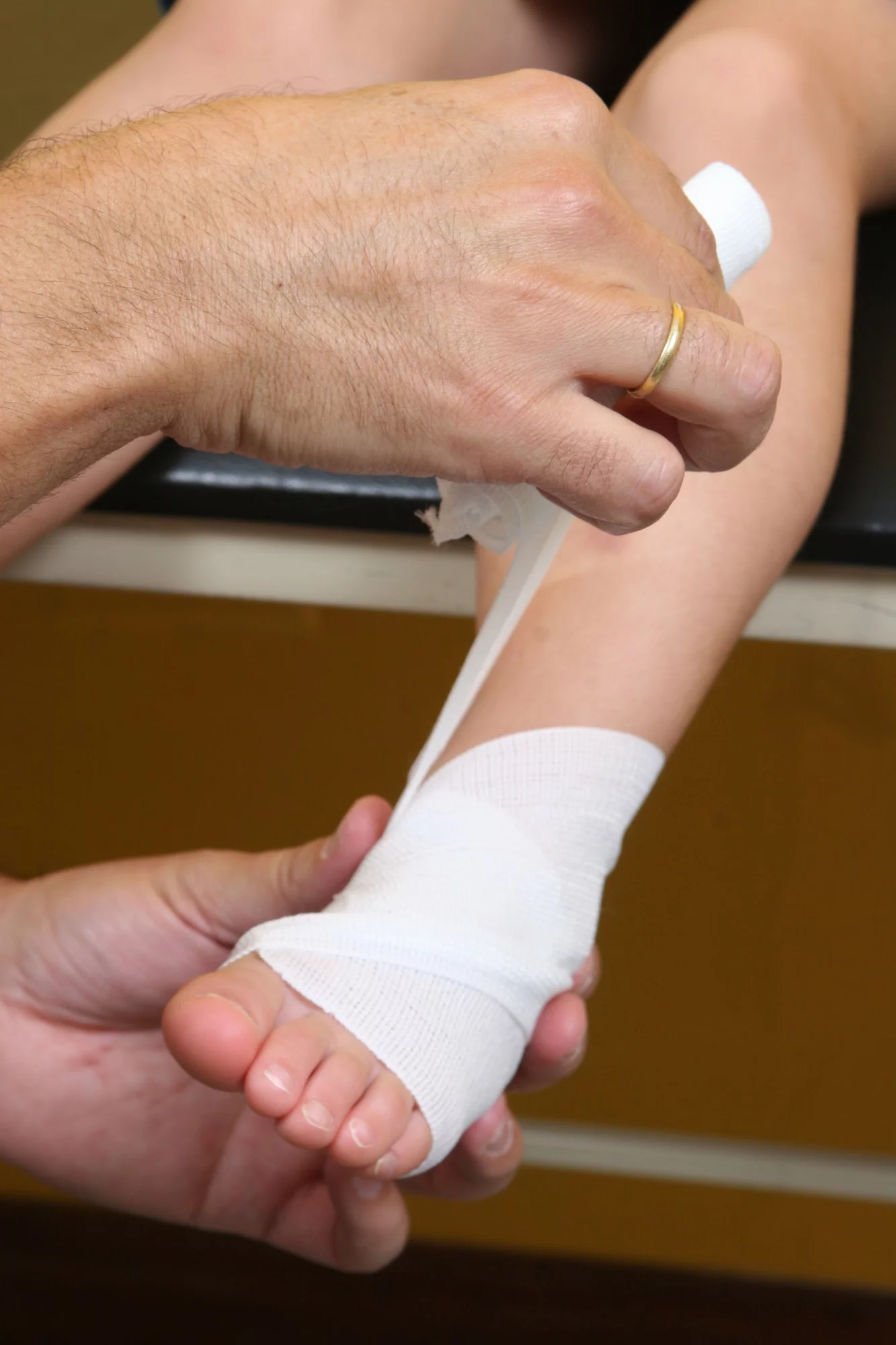Immediate Treatment
Foot and ankle injuries happen every day. Broken bones, dislocations, sprains, contusions, infections, and other serious injuries can occur at any time. Early attention is vitally important; whenever you sustain a foot or ankle injury, you should seek immediate treatment; our experts at Bay Area Foot Care are waiting and ready to help. Don’t let myths and misunderstandings about foot and ankle injuries stop you from seeking the care you need.
Foot & Ankle Injury Myths
It can’t be broken, because I can move it.
False: This widespread idea has kept many fractures from receiving proper treatment. The truth is that often you can walk with certain kinds of fractures. Some common examples include breaks in the smaller, outer bone of the lower leg, small chip fractures of either the foot or ankle bones, and the often-neglected fracture of the toe.
If you break a toe, immediate care isn’t necessary.
False: A toe fracture needs prompt attention. If X-rays reveal it to be a simple, displaced fracture, care by your podiatric physician usually can produce rapid relief. However, X-rays might identify a displaced or angulated break. In such cases, prompt realignment of the fracture by your podiatric physician will help prevent improper or incomplete healing. Often, fractures do not show up in the initial x-ray. It may be necessary to x-ray the foot a second time, seven to ten days later. Many patients develop post-fracture deformity of a toe, which in turn results in a deformed toe with a painful corn. A good general rule is: Seek prompt treatment for an injury to foot bones.
If you have a foot or ankle injury, soak it in hot water immediately.
False: Don’t use heat or hot water on an area suspected for fracture, sprain, or dislocation. Heat promotes blood flow, causing greater swelling. More swelling means greater pressure on the nerves, which causes more pain. An ice bag wrapped in a towel has a contracting effect on blood vessels, produces a numbing sensation, and prevents swelling and pain. Your podiatric physician may make additional recommendations upon examination.
Applying an elastic bandage to a severely sprained ankle is adequate treatment.
False: Ankle sprains often mean torn or severely overstretched ligaments, and they should receive immediate care. X-ray examination, immobilization by casting or splinting, and physiotherapy to ensure a normal recovery all may be required. Surgery may even be necessary.
The terms ‘fracture,’ ‘break,’ and ‘crack’ are all different.
False: All of those words are proper in describing a broken bone.

